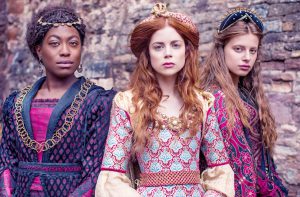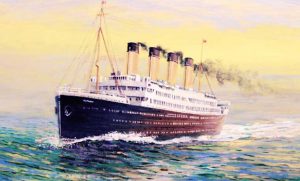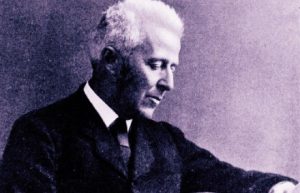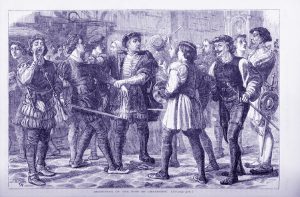
The Spanish Princess has captivated audiences with its lush costumes and dramatic portrayal of Catherine of Aragon’s early years, but how accurate is this Tudor-era television series when held up against the historical record? Based on Philippa Gregory’s novel, the show blends fact with fiction, often taking significant liberties with real events, characters, and timelines. In this essay, we’ll explore the historical inaccuracies in The Spanish Princess, separating the dramatized narrative from the documented truth about Catherine of Aragon, Henry VII, Elizabeth of York, Henry VIII, and the Tudor court.
With over 25 years of studying the Tudor period and a seven-book Tudor historical fiction series to my name, I bring a well-researched and passionate perspective to the lives of Henry VII, Catherine of Aragon, and the court that shaped them. If you enjoy peeling back the layers of fact and fiction in Tudor dramas, you’ll feel right at home here, and maybe even find yourself intrigued enough to explore my novels that bring this world to life in rich, imaginative detail.
Episode Seven: All Is Lost
As Catherine’s hopes unravel, she confronts betrayal, isolation, and the loss of royal favor. Determined not to give up, she finds strength in her faith and her belief that destiny has greater plans for her.
A Princess Doesn’t Need a Lecture on the Duties of the Monarchy
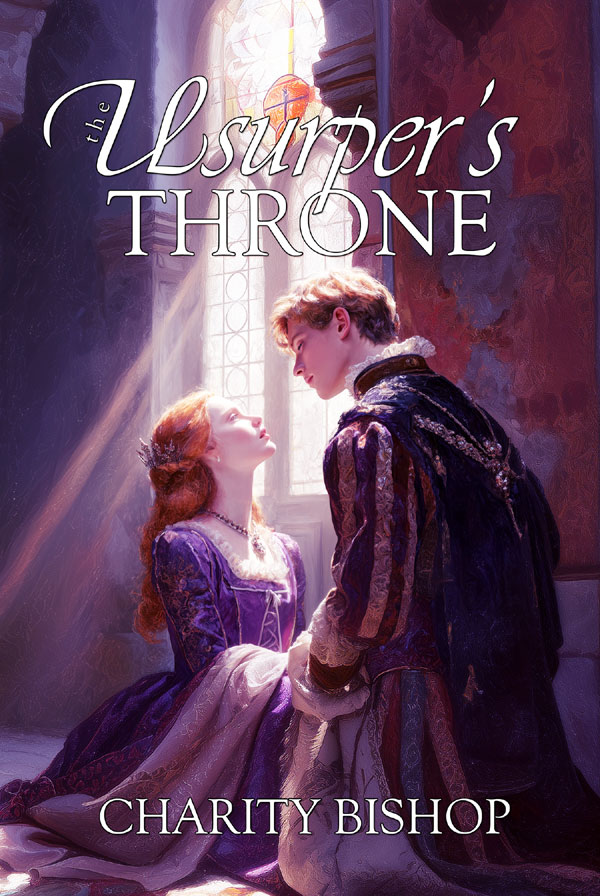
As a historical novelist, I know how hard it is to deliver exposition without turning dialogue into a history lecture. But if you must deliver one, do not have Margaret Beaufort explain how the monarchy works and what is expected from them to freaking Catherine of Aragon. Catherine was the daughter of two reigning monarchs: Queen Isabella I of Castile and King Ferdinand II of Aragon. She grew up surrounded by statecraft and war, religion and empire. This girl led Spanish Parliament at eleven years old. The concept of putting “duty before love” was carved into her bones long before she ever stepped on English soil.
This isn’t a naive young girl with stars in her eyes. Catherine knew exactly what it meant to serve a country, negotiate an alliance, and defend a crown. Her parents taught her by example, especially her mother, whose military campaigns and religious reforms made her one of the most powerful women of the age. Catherine is probably the last person in the room who needs to be told what it “means to be a monarch.” 😛
If the writers wanted to deliver a lecture about sacrifice and sovereignty so that their audience has a clue, they could have given that line to Margaret in conversation with a servant or a courtier, someone low-born and ignorant who might actually need the lesson. Or better yet, let Catherine say it. She earned it.
The Ridiculous Notion of Prince Harry Sailing to Spain
According to this episode, Prince Harry is going to hop on a ship and sail to Spain to get married. I had to laugh. If I had not laughed, I might have cried.
Absolutely not.
There is zero chance King Henry VII would send his only surviving son and heir to a foreign country. This is a king so protective of his dynasty he kept tight surveillance over everyone with Plantagenet blood. His enemies were everywhere, and Edmund de la Pole was still a threat. A sea voyage was dangerous, assassination attempts were real possibilities, and accidents happened. You don’t gamble with your dynasty like that. Ever.
You don’t send royalty to foreign kingdoms for marriage unless it’s absolutely unavoidable (see: Mary Tudor traveling to France, or Mary Queen of Scots going to France because she was already Queen of Scotland). Catherine, like most noblewomen, was the one expected to travel. That was standard practice in nearly every European alliance. If Harry married anyone else, she would have come to him, not the other way around.
Catherine as England’s First Female Ambassador
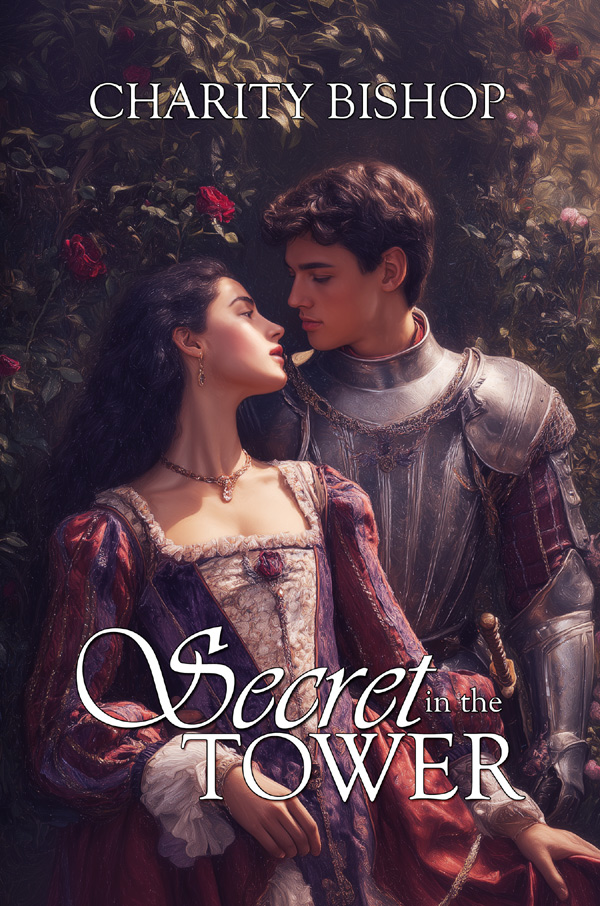
This story line almost gets it right… but not quite.
Catherine was appointed ambassador of Spain to England, the first female ambassador in English history, but it didn’t come out of nowhere. It was Catherine’s own idea. She was fed up with her father’s male envoy, who failed to properly represent Spanish interests and botched her position at court. She kept expecting him to follow through on her dowry money so she could marry Harry, and after he cow-towed to Henry one too many times, she told him off. Then she wrote to her father, demanding he appoint her to act in her own interests (a shrewd move) and he did.
This matters. It shows Catherine’s assertiveness, political savvy, and refusal to be sidelined. Stripping her of this agency does a disservice to her legacy. Catherine was a force to be reckoned with, not someone passively handed titles.
“I Can Dress myself”: No, You Absolutely Cannot
I laughed aloud when Catherine insisted she could dress herself. Tudor women, especially noblewoman, could not dress themselves without help. It would be physically impossible to do so. In fact, needing ladies-in-waiting to dress you indicated your wealth and position. (They did not design fancy clothing in those days for ease of movement or working for a living!)
But just for fun, let’s break down how one would get dressed.
First comes the smock, a linen chemise worn against your bare skin. Then you put on and tighten the stays from behind (an early corset). This required someone to lace them for you. A kirtle (or a tightly fitted under-dress, often with a bodice and a skirt) goes over this, also laced or with hooks. Then comes the Spanish Farthingale, a stiff hoop skirt worn to give structure to the gown and tied around the waist. Next you put on the gown, which weighs several pounds and requires pinning around the bodice and the sleeves to keep it in place. Then she would wear a hood or a headdress, with her hair tucked and pinned into place. These outfits were a sign of status, wealth, and political affiliation. It could take up to two hours to get dressed in the morning.
The “Missing” Duke of Suffolk and False Treason
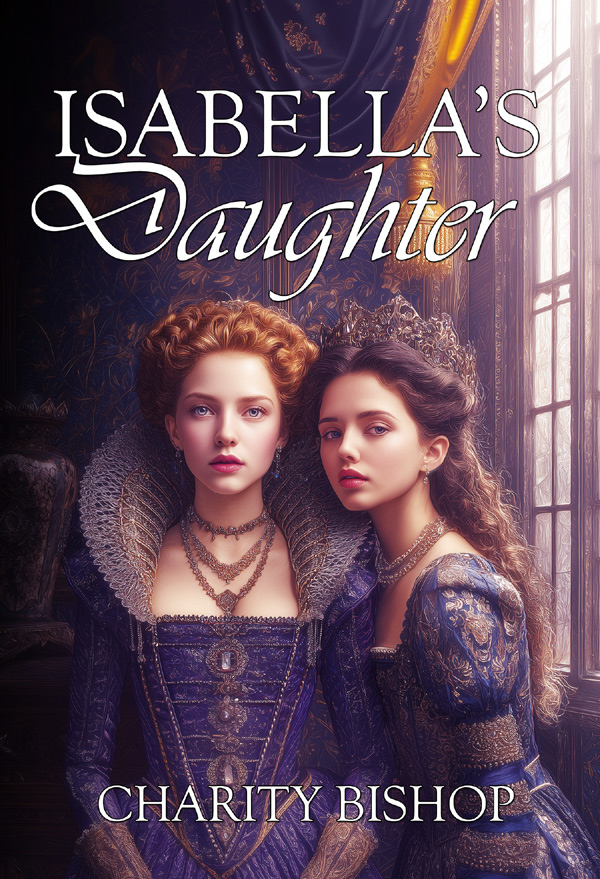
This episode fabricates a high-stakes drama around Edmund de la Pole (the Duke of Suffolk) that never happened. In truth, Philip of Burgundy and Juana were shipwrecked on the English coast and taken into Henry’s custody. During their visit, Philip did agree to turn over Edmund de la Pole on one condition: that Henry not execute him. Henry agreed, and Philip left. Henry sent Sir Thomas Lovell (again, not in these episodes but a prominent feature in my novels as the king’s enforce) to arrest Edmund and quietly imprison him in the Tower of London. There was no threat of invasion. No escape. No secretive arrivals. Just diplomacy.
The idea that Margaret Pole secretly plotted with him does her a disservice. While it’s true she lost her income and had to place her son Reginald in a religious house, there is no evidence she ever plotted against the Tudor family. Given that her brother died so Henry could secure the throne, she would be a fool to engage in treason. Her eventual execution under Henry VIII was one of the most unjust of his reign, based on flimsy or fabricated evidence and fueled by paranoia. Let’s not claim she had it coming.
Faith and Fire: The Religious Tensions the Show Overlooks
Let’s talk religion.
The romance between a devout Spanish Catholic woman of African descent and a Muslim soldier in Tudor Europe is compelling. But rather than exploring the real complexities of faith, race, and national identity in their time, the show ignores their religion. Back then, faith made up the worldview and framework of everyone‘s life. Catholics had views of what it meant to be loyal to their faith, a deep and abiding fear of going to hell, and were obedient to the moral laws of the Church. Historically, their relationship would have been charged with deep theological tension.
Catalina, like Catherine of Aragon, was a product of the Catholic zealotry of Queen Isabella’s court. Isabella and Ferdinand saw themselves as defenders of the faith, by expelling or forcibly converting Muslims and Jews. To Spaniards, Catholicism wasn’t just religion but a national identity. To be Spanish meant to be Catholic. Even conversos (converted Jews or Muslims) lived under intense scrutiny via the Inquisition, and were often suspected of secret heresy. A practicing Muslim like Oviedo would have been viewed as an outsider and a theological threat.
Catalina would have been taught from girlhood that Islam is heresy, and its believers are infidels who must be either converted or exiled. Her Queen, her court, and her Church would have drummed this into her identity. Oviedo would have either been a hidden Muslim living under the threat and fear of persecution or the proud survivor of a defeated people. For him, Catholics were not just theologically different, but responsible for the persecution of his people, for burning Arabic books, destroying mosques, torturing Muslims via the Inquisition, and forcing conversions. He would have seen the saints, the worship of Mary, and relics as idolatrous, and the Pope’s authority as established by man, not as a divine truth.
Catholic teaching at the time was clear: marriage must be between two Christians. A union with a Muslim would have endangered not just her reputation, but also her soul. In a realistic interpretation of their relationship, both should have argued about theological differences, raised greater questions about the Inquisition and the cruelty of forced conversion, and how Jesus would not have stood for the persecution of the Muslims or the Jews in Spain. Catalina would wrestle with her conscience in being intimate with him, believing she is risking both their souls with this union. If Orviedo were serious about marrying her, he would have to convert. There’s no way around it in Catholic teaching.
She Would Not Engage in Premarital Sex
Why is she sleeping with a Muslim man before marriage, with no concern for the religious implications or even a passing thought about his conversion? She lectured another maid for immoral behavior in episode one. Where’s that conscience now?
In the early 1500s, Catholic teaching on premarital sex was clear: it’s a grave sin. It’s a serious offense against God with eternal consequences. Mortal sins cut a person off from God’s grace. If you died without confessing and repenting of it, your soul risked eternal damnation. Confession and penance were the only ways to restore spiritual health. But even after confession, there was still the expectation of real contrition and a vow not to sin again.
While men and women were expected to remain chaste until marriage, women were judged a lot harder. Virginity was tied to a woman’s honor, reputation, and marriageability. A ruined woman’s chances at a respectable marriage could vanish and her family face disgrace. Among the devout, sex had political and spiritual implications. Rulers were expected to be moral exemplars, and held their households to that standard. Queen Isabella had been famously strict with her daughters and ladies-in-waiting, enforcing codes of conduct aligned with the Church. As a woman appointed to look after and protect the virtue and integrity of Catherine of Aragon, Catalina would be expected to be virtuous in every sense—modest in speech, dress, and behavior. To get pregnant outside marriage would bring scandal, punishment, and banishment from court.
Meet the Real Tudors!
In Isabella’s Daughter, the arrest and imprisonment of Edmund de la Pole (the final Plantagenet threat to the Tudor throne) unfolds in a dramatic conflict orchestrated by Sir Thomas Lovell and sanctioned by Philip of Burgundy in exchange for English support. My novel offers a truer account of the delicate diplomacy between Spain and England at this time, highlighting Catherine of Aragon’s frustration at court, the political maneuvering behind Juana and Philip’s visit, and the final triumphant capture of England’s last threat to the Tudor throne.
